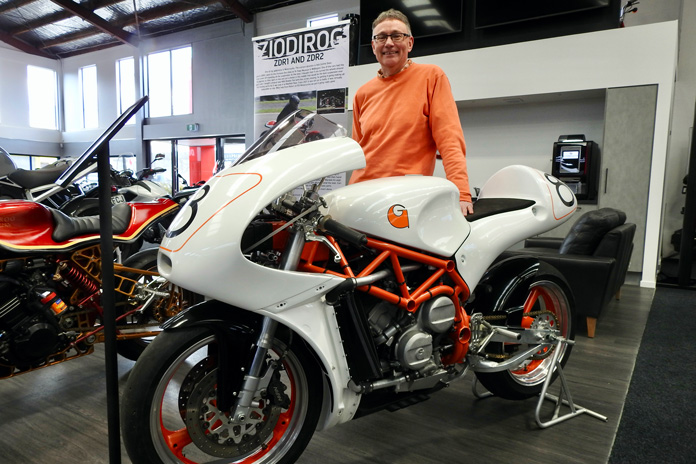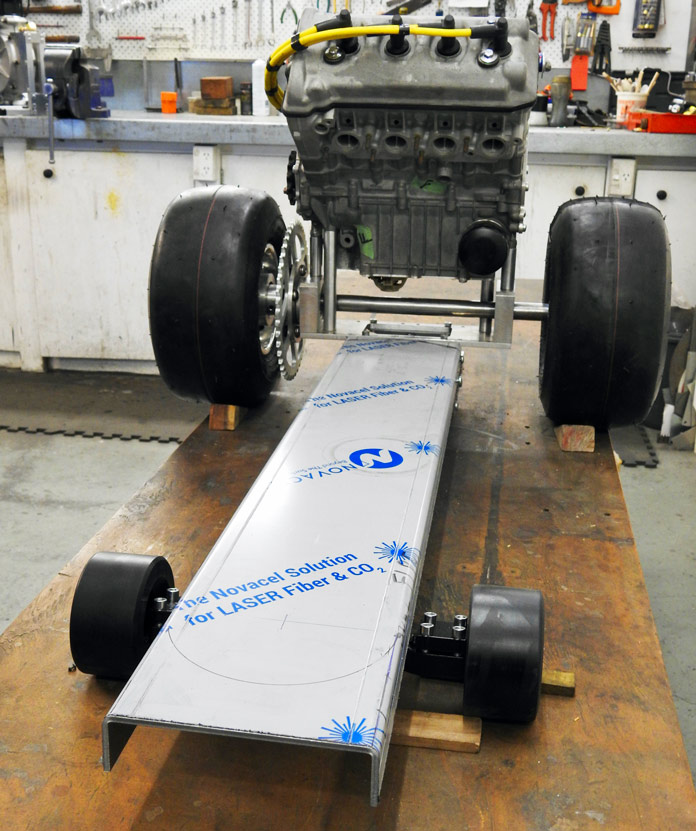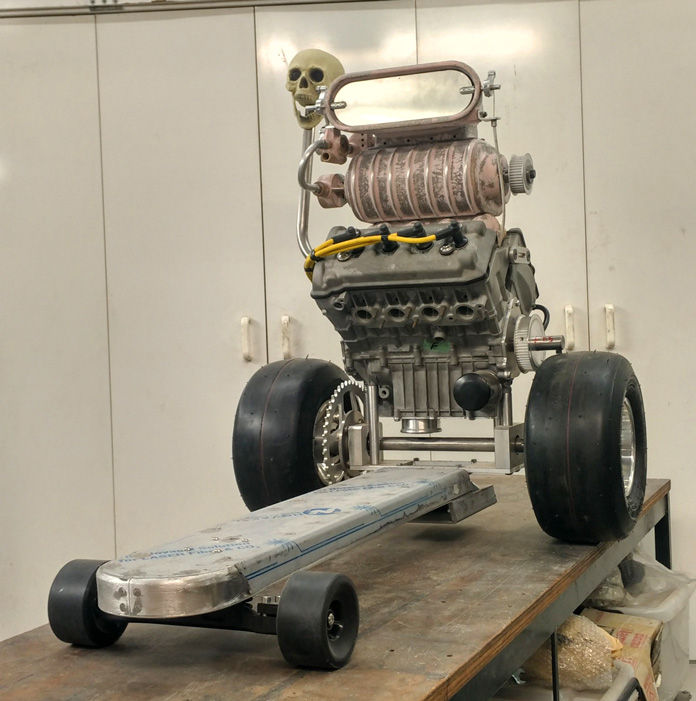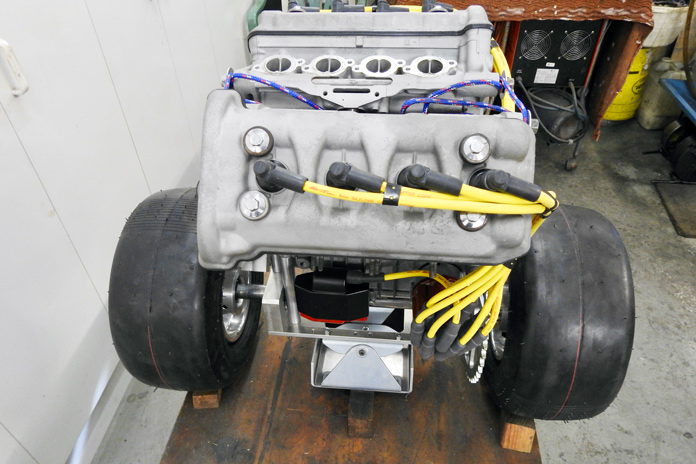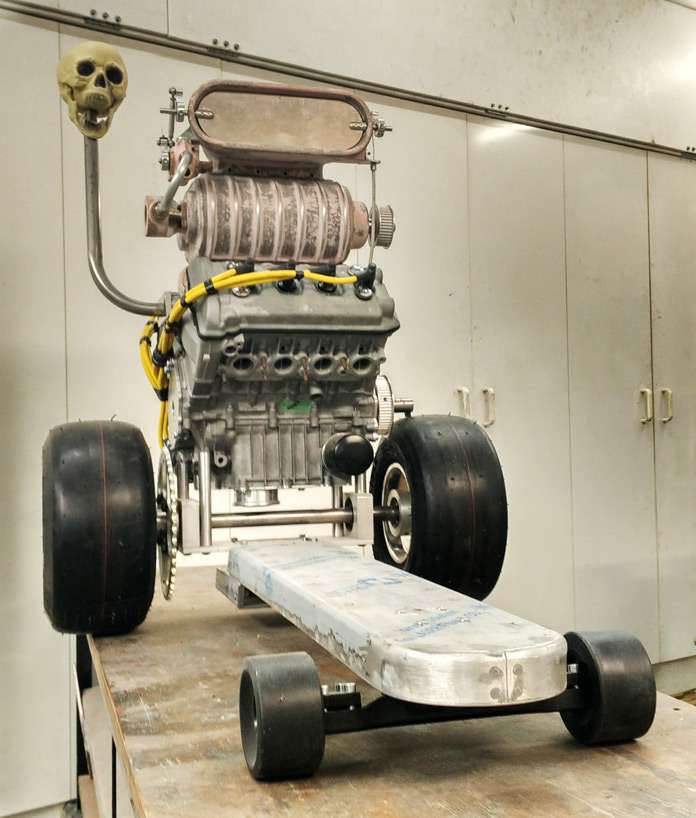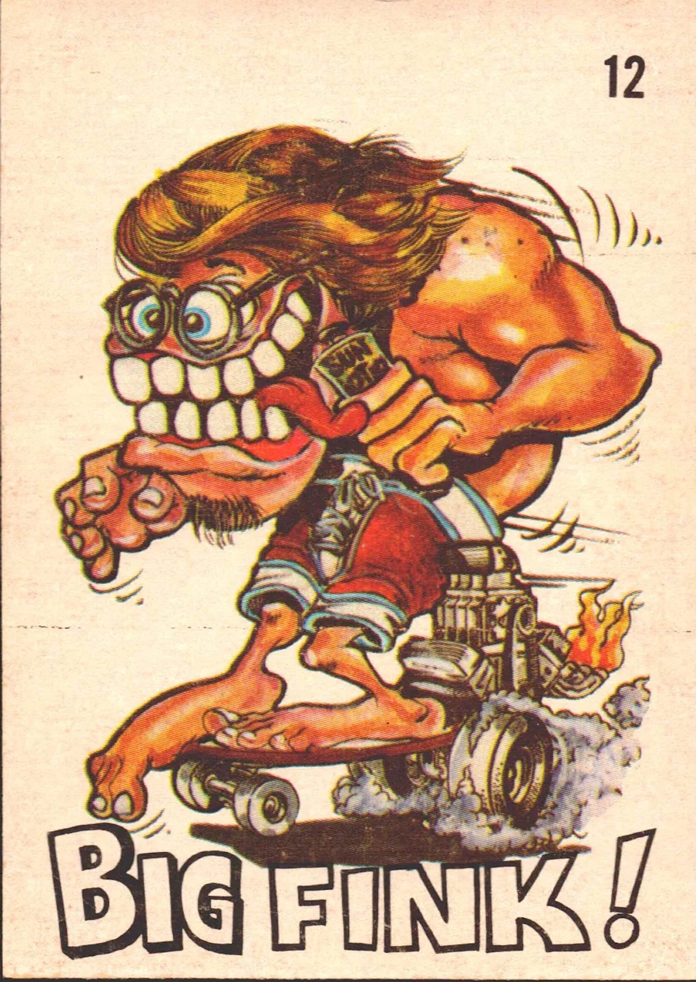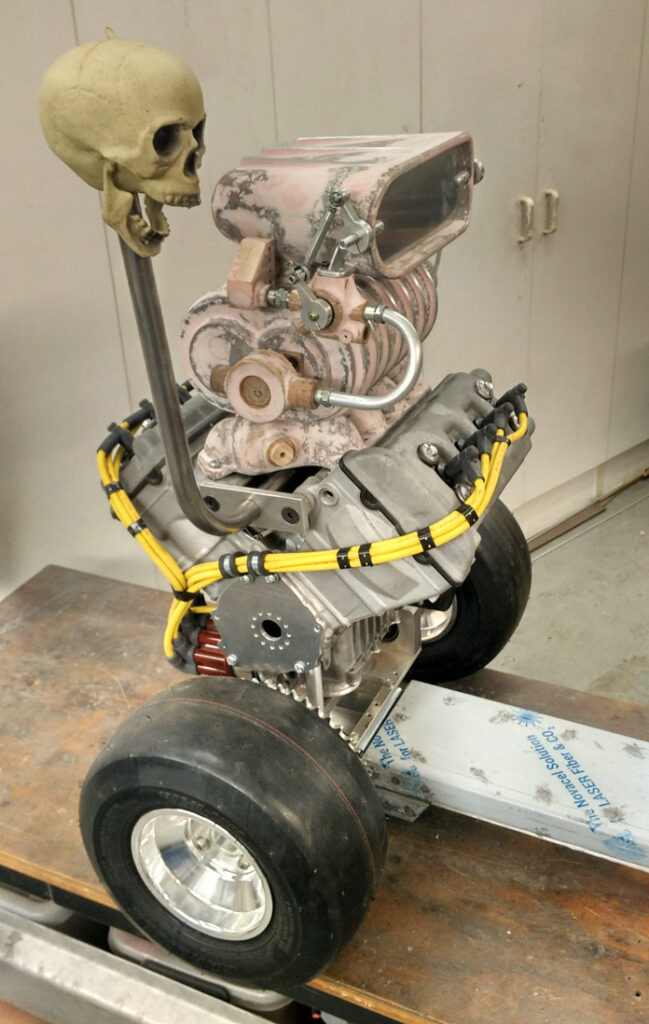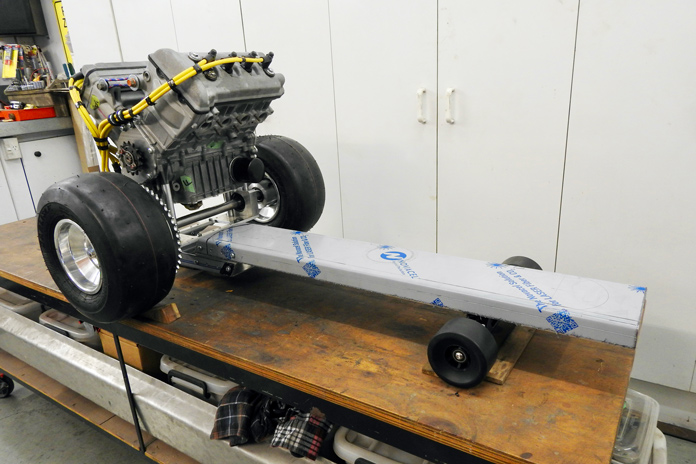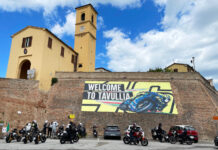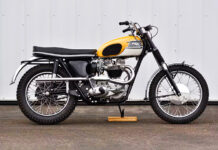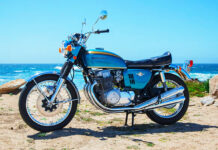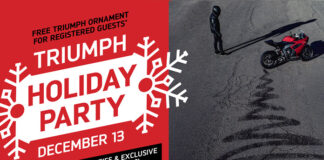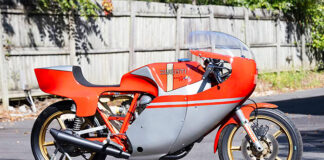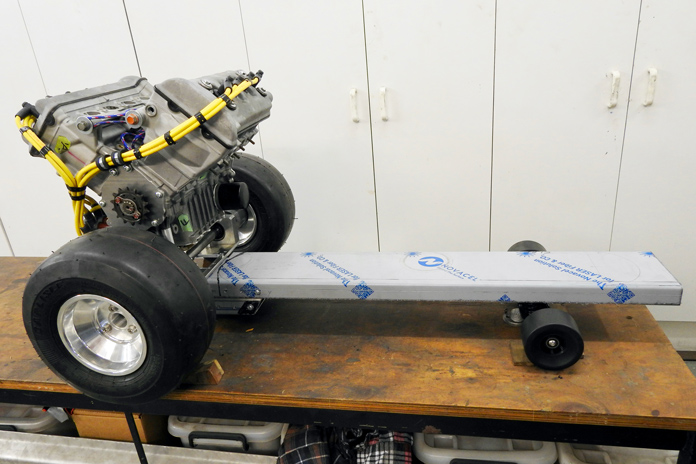
Chris Gordon is a New Zealand motorcycle enthusiast and electrical engineer who’s built several unique machines under the CGR (Chris Gordon Racing) banner. Interestingly, he doesn’t ride motorcycles himself; he builds them purely for the technical challenge. On a recent visit to his garage, something caught my eye: a skateboard with a V8 engine!
Chris’s inspiration traces back to the Kustom Kulture trend of 1960s America. Back in Christchurch, New Zealand, he collected cards and stickers from the Odd Rods Monster in Cars series by B.K. Taylor, influenced by custom car legend Ed “Big Daddy” Roth. These early influences planted the seed for his creative endeavors, blending technical skill with artistic vision. Chris decided to bring his childhood memories to life using leftover parts from his motorcycle projects.
For the V8 engine casing, he used parts from a 500cc V8 racing engine, including Kawasaki ZXR250 components. However, these are just outer shells housing two electric motors. The motors and components are cleverly hidden to maintain the illusion of a supercharged V8 engine.
The skateboard’s design process involved meticulous planning and improvisation. Chris’s garage is a treasure trove of parts and components from past projects, providing a rich resource for his builds. The V8 skateboard is no exception, showcasing his ability to repurpose and innovate.
The first motor, sourced from a discarded 24-volt drill, powers the supercharger. This setup includes a 60-tooth pulley and toothed belt, simulating the crankshaft drive of a real supercharged engine. The supercharger case, made from plywood and fiberglass, houses the controllers for the electric motors, maintaining the illusion of a functional V8 engine. Chris’s attention to detail extends to the paint and texture, replicating the look of metal castings.
More by the author: Tranz Alpine Scooter Safari: Cold Kiwi Cosplay For a Good Cause
The second motor is from an 18-volt chainsaw and drives the skateboard. Mounted vertically inside the engine cases, this motor connects to a custom gearbox and sprocket system. The gearbox output shaft is coupled to a ZXR250 gearbox shaft, joined by a bearing guide. This ingenious setup ensures a seamless connection, allowing the motor to drive the skateboard efficiently.
The rear axle assembly features a ZXR250 sprocket and HD520 motorcycle chain, providing robust power transmission. The 13×6.5-inch tires, mounted on racing kart alloy rims, offer excellent traction and stability. To facilitate steering, Chris incorporated one-way bearings in the wheel hubs, allowing for differential speed between the wheels. This innovative solution ensures smooth and responsive handling, even at high speeds.
The skateboard’s deck, made from 4mm aluminum alloy, serves as the structural foundation and houses the power supply. Four 12-volt sealed lead-acid batteries are mounted under the deck, secured by support pins and a cover plate. The front section of the deck is folded into a semicircle, reminiscent of mid-1960s skateboard designs. This nod to retro aesthetics adds to the overall charm of the build.
The front steering system utilizes a 12-inch cast-aluminum skateboard truck with longboard wheels. This setup provides precise control and stability, essential for navigating various terrains. The rear steering system, custom-made by Chris, complements the front setup and ensures balanced handling. The underslung design of the rear truck keeps the overall height of the motor and deck to a minimum, maintaining the sleek profile of the Odd Rod-inspired skateboard.
More by the author: Syd’s Run: If You Can’t Be Fast, Be Spectacular
Chris’s commitment to authenticity extends to the fuel system. The deck is designed to replicate a fuel tank, with two “fuel” hose lines rising from the rear. One hose carries power from the batteries to the supercharger, while the other is purely decorative, simulating a throttle return line.
The ignition system is another testament to Chris’s creativity. He modified distributor caps from a VW Beetle to create a faux 8-cylinder setup, mounted to the engine cases. This “magneto” mimics the appearance of a Mallory Super Mag 2, complete with wooden components and yellow spark plug wires. The resemblance to a real ignition system adds to the overall authenticity of the build.
Sound plays a crucial role in completing the illusion. Chris integrated a sound card into the skateboard, producing a realistic V8 soundtrack. The speakers, hidden within the engine cylinders, amplify the sound, making it seem as though the noise emanates from the exhaust pipes. This auditory element adds a dynamic dimension to the experience.
Chris’s journey in custom building is deeply rooted in his background. His six years with a “Top Eliminator” drag racing team in the late 1970s provided invaluable experience and inspiration. This period honed his skills and fueled his passion for mechanical innovation. The V8 skateboard is a culmination of his life’s work, blending technical expertise with a love for Kustom Kulture.
The future of the V8 skateboard includes several exciting features. Chris plans to finish the deck with a subdued design, reminiscent of 1960s skateboards. He also envisions an exaggerated gear shift originating from within the engine, topped with a Halloween skull. Lowering the skull’s jaw will activate the first motor, starting the engine, while moving the skull forward will control the second motor for speed.
Chris’s dedication to his craft and his ability to transform childhood memories into tangible creations is truly inspiring. The V8 skateboard is a testament to his ingenuity and passion for custom builds. It stands as a unique blend of art and engineering, capturing the essence of Kustom Kulture while pushing the boundaries of what’s possible. Chris’s work reminds us that with creativity and determination, even the wildest dreams can become reality.


